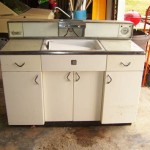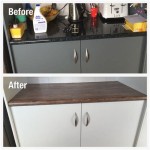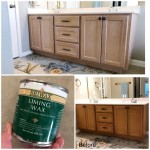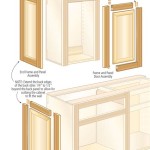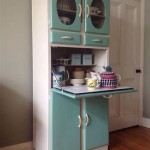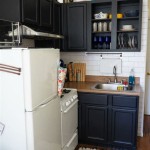How To Remove Wax From Kitchen Cabinets
Wax buildup on kitchen cabinets can detract from their appearance and create a sticky, dust-attracting surface. Fortunately, removing wax is usually a straightforward process, requiring readily available household items and a bit of patience. This article will outline effective methods for removing wax from kitchen cabinets without damaging the finish.
1. Assessing the Cabinet Finish
Before attempting any wax removal method, it is crucial to determine the type of finish on the cabinets. Different finishes react differently to cleaning solutions, and using the wrong approach can lead to damage. Wood cabinets can have a variety of finishes, including lacquer, varnish, polyurethane, and paint. If unsure about the finish, testing a cleaning method in an inconspicuous area, such as the inside of a cabinet door, is recommended. This allows for observation of any adverse reactions before applying the method to more visible areas.
2. Mild Dish Soap Solution
For light wax buildup, a mild dish soap solution often proves effective. Mix a few drops of dish soap with warm water in a bucket. Dampen a soft, lint-free cloth with the solution and wring it out thoroughly. Excess water can damage wood finishes. Gently wipe the waxed areas, working in the direction of the wood grain if applicable. Rinse the cloth frequently with clean water and wring it out completely. After removing the wax, dry the cabinets immediately with a clean, dry cloth to prevent water spots.
This method is particularly suitable for cabinets with a durable, non-porous finish like polyurethane. For more delicate finishes or heavier wax buildup, more specialized approaches may be necessary.
3. Mineral Spirits for Stubborn Wax
Mineral spirits are a more potent solvent that can dissolve stubborn wax buildup without damaging most cabinet finishes. However, it is essential to test this method in an inconspicuous area first, as some finishes may react negatively. Apply a small amount of mineral spirits to a clean, soft cloth. Gently rub the waxed area, working in small sections. Avoid excessive rubbing, which could dull the finish. After the wax is removed, wipe the area with a clean, damp cloth to remove any residual mineral spirits. Dry thoroughly with a clean, dry cloth.
When using mineral spirits, ensure adequate ventilation in the work area. Wear gloves to protect skin, and avoid contact with eyes. Keep mineral spirits away from open flames and heat sources.
4. Baking Soda Paste for Gentle Abrasion
For delicate finishes or wax buildup in intricate details, a baking soda paste offers a gentle abrasive option. Make a paste by mixing baking soda with a small amount of water. Apply the paste to the waxed area and gently rub with a soft cloth or a soft-bristled brush, working in a circular motion. Avoid excessive pressure, which could scratch the finish. After the wax is removed, wipe the area with a clean, damp cloth to remove any residual paste. Dry thoroughly.
This method is particularly useful for removing wax from carved or textured cabinet surfaces where liquid solvents might be difficult to control.
5. Commercial Wax Removers
Commercial wax removers are available and formulated specifically for removing wax from various surfaces, including wood. When selecting a commercial product, ensure it is compatible with the cabinet finish. Follow the manufacturer's instructions carefully, including any safety precautions. Always test the product in an inconspicuous area before applying it to more visible areas.
6. Preventing Future Wax Buildup
Preventing wax buildup is easier than removing it. Regular cleaning with a mild dish soap solution and warm water can prevent wax from accumulating. Avoid using furniture polishes or waxes on kitchen cabinets, as these can contribute to buildup over time. Promptly clean up any spills or splatters that could contain wax, such as candle wax or cooking sprays, to prevent them from hardening on the cabinet surface.
7. Seeking Professional Help
For valuable antique cabinets or particularly stubborn wax buildup, consulting a professional furniture restorer is advisable. They have the expertise and specialized tools to remove wax safely and effectively without damaging the cabinet's finish. Attempting aggressive DIY methods on valuable or delicate pieces can lead to irreversible damage.

How To Clean Kitchen Cabinets Everyday Skate
:max_bytes(150000):strip_icc()/ways-to-clean-wood-kitchen-cabinets-3017289-01-765f893e7cca49a1ab72d7c49efdf518.jpg?strip=all)
Tips For Cleaning Food Grease From Wood Cabinets

How To Deep Clean Kitchen Cabinets And Keep Them Looking Gorgeous Everyday Skate

How To Easily Clean Sticky Wood Kitchen Cabinets Creative Homemaking

Annie Sloan Wax Removal Please Help Hometalk

How To Clean Prep Wood Kitchen Cabinets Before Painting Do Dodson Designs

How To Clean Sticky Grease Off Kitchen Cabinets

How To Easily Clean Sticky Wood Kitchen Cabinets Creative Homemaking

How To Clean Kitchen Cabinets Dianella Polishing

How To Clean Prep Wood Kitchen Cabinets Before Painting Do Dodson Designs
Related Posts

